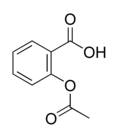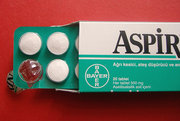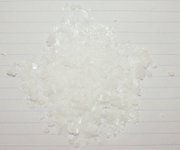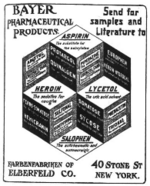Objectives: Perfluorochemicals (PFCs) may exert a neuroprotective function in the early phase of ischemia by improving the oxygen supply to the endangered tissue. We have, therefore, investigated the effect of Oxycyte, a second-generation pemuorocarbon solution, on the extent of early ischemic brain damage in a model of permanent focal cerebral ischemia.
Methods: Eight hours of permanent focal cerebral ischemia was induced in isoflurane anesthetized male Sprague-Dawley rats by unilateral middle cerebral artery (MCA) thread occlusion under the control of laser Doppler flowmetry (LDF). Animals were assigned to one of the following treatment groups: nO2-NaCI and hO2-NaCI-NaCl (0.9%, 1 ml/100 g i.v.) and nO2-Oxycyte and hO2-Oxycyte-Oxycyte (1 ml/100 g i.v.). The injection of NaCl or Oxycyte was performed immediately after MCA occlusion. After injection, breathing was changed to pure oxygen in groups hO2-NaCl and hO2-Oxycyte while animals in groups nO2-NaCl and nO2-Oxycyte were allowed to breathe air. The necrotic volume was calculated from serial coronal sections stained with silver-nitrate. In addition, nitrotyrosine production was studied by immunohistochemistry.
Results: Upon MCA occlusion, animals showed a reduction of cerebral blood flow of ~ 80% of the LDF signal in all groups. Hemodynamic and metabolic parameters were not affected by the infusion of Oxycyte. The total infarct volume was reduced in hO2-Oxycyte animals [group nO2-NaCl: 341 ±31 mm^sup 3^ (mean ±SD), group hO2-NaCl: 351 ±33 mm^sup 3^, group nO2-Oxycyte: 354±24 mm^sup 3^, and group hO2-Oxycyte: 300±29 mm^sup 3^, p
Discussion: These results suggest that Oxycyte administered immediately after the onset of vascular occlusion may exert neuroprotective effects in the early phase of brain ischemia. [Neural Res 2005; 27: 509-515]
Keywords: Experimental stroke; focal cerebral ischemia; laser Doppler flowmetry; perfluorochemical; peroxynitrite
INTRODUCTION
Stroke is among the most frequent causes of death and also one of the leading causes of disability in industrialized countries. Most first-ever stroke attacks are of the ischemic subtype, mainly due to thrombembolic events. Despite intense research and many promising results in animal experiments, only one therapeutic approach has so far proven efficient in the clinical setting. This measure is recanalization by thrombolysis following infusion of plasminogen activators. However, the time window for this kind of therapy is short, comprising the first hours from the onset of stroke symptoms at best.
One of the very first events resulting in or contributing to ischemic cell death appears to be tissue hypoxia1. In accord, enhancing oxygen availability in the (peri)ischemic region in the early phase may improve neuronal resistance against the ischemic attack. An increase of tissue oxygen availability might be achieved by hyperbaric oxygenation, infusion of a modified oxygen carrier such as cross-linked hemoglobin, or administration of perfluorochemicals (PFCs) along with an increase of the inspired oxygen fraction. The PFCs became available some 20 years ago, and even in one of the first clinical studies, the improvement of cerebral hypoxia was among the justifications to use a PFC, Fluosol-DA, instead of blood transfusion2. In order to make PFCs applicable for systemic administration, they have to be emulsified. Recent progress in emulsion technology has yielded so-called second-generation PFCs with a remarkably increased capability for oxygen transport, displaying a total oxygen transport capacity comparable with that of blood (~ 17-20 volume % at 1 bar oxygen pressure). Therefore, we have used one of these newly developed PFC solutions, Oxycyte, to test the effect of an increased oxygen delivery on the dynamics of ischemic neuronal cell death. Since hypoxia is presumed to occur in the early phase of ischemia predominantly1, we used a short-term time course of ischemia, i.e. an 8-hour permanent middle cerebral artery (MCA) occlusion protocol in rats.
MATERIALS AND METHODS
Permanent MCA occlusion
The experimental protocol was approved by the Federal Animal Ethics Committee (Regierungspräsidium Karlsruhe) and performed according to the institutional guidelines and state laws. Male Sprague-Dawley rats [body weight (bw), 270-350 g] were anesthetized with 2% isoflurane delivered through a facemask. The body temperature was kept constant at 37°C using a rectal temperature-controlled heating pad. All animals received a subcutaneous injection of 5 µg/100 g bw atropine (Fresenius, Bad Homburg, Germany) and 3 µg/ 100 g bw buprenorphine (Temgesic(TM), Essex Pharma, Munich, Germany) to reduce mucus production and postoperative pain, respectively.
Animals were placed in a stereotactic frame (Kopf Instruments, Tujunga, USA) and two burr holes were drilled in the skull over the right hemisphere leaving the dura intact. Positions of the burr holes were 2 mm posterior and 5 mm lateral, and 5 mm posterior and 5 mm lateral to the bregma, respectively. In each burr hole a laser Doppler flowmetry (LDF) fiber (diameter, 0.4 mm) was positioned and fixed with cyanacrylate glue and dental cement. The cerebral blood flow (CBF) was continuously monitored (DRT4, Moor Instruments, Devon, UK) and recorded using a LabView (National Instruments, Munich, Germany) based multimodal monitoring system developed in our laboratory. The initial sampling rate was 150Hz, and data were sampled down to 1 Hz for analysis.
Focal cerebral ischemia was induced by intraluminal occlusion of the MCA as described previously3,4. Briefly, the right common carotid artery (CCA) was exposed through a midline incision and carefully dissected from the surrounding tissue and vagal nerve using microsurgery techniques. The external carotid artery, the lingual and the maxillary artery were ligated and divided, and the internal carotid artery (ICA) was exposed. A silk suture was tied loosely around the ICA and a nylon suture (4-0) introduced into the CCA via a small incision. The suture was coated over a distance of 5 mm with a silicon elastomer (Provil, Bayer Dental, Leverkusen, Germany) to give a tip diameter of 430-460 µm. The diameter was carefully controlled using a stereomicroscope (GZ6, Leica, Bensheim, Germany) equipped with a scale in an eyepiece (10 µm scaling). The suture was advanced with special care not to enter the pterygopalatine artery until an abrupt drop of the LDF signal indicated MCA occlusion. After control of appropriate positioning of the filament and exclusion of intracranial bleeding3 the suture was fixed and the neck incision closed. After removing the LDF fibers from the skull, anesthesia was discontinued and the animals were allowed to recover.
Treatment groups
Animals were randomly assigned to one of four different treatment regimes starting immediately after MCA occlusion. Groups nO2-NaCl and hO2-NaCl, intravenous (i.v.) application of 1 ml/100 g bw saline and groups nO2-Oxycyte and hO2-Oxycyte, i.v. injection of 1 ml/100 g bw Oxycyte. After injection, breathing was changed to pure oxygen to induce normobaric hyperoxygenation (NBO) in groups hO2-NaCl and hO2-Oxycyte while the animals in groups nO2-NaCl and nO2-Oxycyte were allowed to breathe air. The NBO treatment was maintained until the end of the experiment by keeping the animals in an oxygen tent.
Eight hours after MCA occlusion the animals were reanesthetized and after taking an arterial blood sample for blood gas analysis (Omni 4, AVL, Medizintechnik, Bad Homburg, Germany) they were killed by bleeding from the aorta. The brains were immediately removed, shock frozen in liquid nitrogen and stored at -80°C. The skull and brain base were carefully inspected and animals with incorrect placement of the filament or occurrence of subarachnoid hemorrhage were excluded from further analysis.
Volumetric analysis of brain damage and immunohistochemistry
From each brain serial coronal sections (thickness, 20 µm) were prepared at -20°C using a cryomicrotom (HM500, Microtom GmbH, Wiesloch, Germany). sections were taken every 500 µm and transferred to poly-L-lysine-coated slides. After air drying, silver-nitrate staining was performed as described previously5. Stained sections were scanned and the area of ischemic damage along with the entire areas of the left and right hemisphere were outlined using Scion image software (free ware available at www.scioncorp.com). Volumes of both hemispheres and of ischemic cell death were calculated taking into account the distance between the sections. The extent of swelling was calculated by the equation described by Kaplan et a/.6 with % swelling= 100 × (volume^sub right hemisphere^ - volume^sub left hemisphere^)/ volume^sub left hemisphere^.
Slices next to those used for determining the extent of brain damage were also transferred to slides, post-fixed with acetone (-20°C, 10 minutes) and air dried. Endogenous peroxidase activity was inactivated by incubation in hydrogen peroxide [3%, dissolved in phosphate-buffered saline (PBS), 10 minutes]. After several washes with PBS, sections were blocked with normal rat serum (Sigma-Aldrich, Taufkirchen, Germany; dilution, 1:10 in PBS for 1 h) followed by incubation in a humidified chamber (4°C, overnight) with a mouse monoclonal anti-nitrotyrosine antibody (Upstate Biotechnology Inc., Biozol, Eching, Germany; dilution, 1 :50 in PBS). Detection and visualization of nitrotyrosine immunoreactivity was performed using an ABC kit (Vectastain Elite, Linaris, Wertheim, Germany) according to the manufacturer's protocol with diaminobenzidine tetrahydrochloride (DAB, Sigma) as chromogen. Hematoxylin was used for counterstaining. Negative controls were carried out with the primary antibody omitted.
Brain sections were evaluated for nitrotyrosine staining by an observer blinded to the treatment regimen. The intensity of immunolabeling was assessed and classified using a ranking scale starting from not different from background staining to very severe staining.
Data analysis
Data are represented as mean ± SD. Statistical analysis was performed using a one-way analysis of variance (ANOVA) procedure and subsequent pairwise comparison of means by the Newman-Keuls test. For analysis of the immunohistochemistry data nonparametric ANOVA procedure with subsequent Dunn's test was performed. Values of p
RESULTS
Blood gas analyses performed at the end of the 8-hour observation period revealed a significantly increased p^sub a^O^sub 2^ in NBO-treated animals with all the other parameters being comparable between groups (Table 1). Similarly, the drop of the LDF signal after MCA occlusion was not different between the experimental groups (Figure 1). All animals survived the 8-hour observation period.
In animals treated with Oxycyte and subsequent NBO (hO2-Oxycyte group) total infarct volume was significantly smaller than in all the other groups (Figure 2). A decrease of the ischemic volume occurred in subcortical and cortical areas to a comparable degree (Figure 2). Analysis of the size of infarction in relation to the distance from the bregma revealed no specific region in which neuroprotection occurred. Hemispheric swelling was not different between the experimental groups (nO2-NaCl, 15.8 ± 4.8%; hO2-NaCl, 21.0 ± 4.2%; nO2-Oxycyte, 20.0 ± 7.1% and hO2-Oxycyte, 16.3 ± 4.0%).
Nitrotyrosine staining
Nitrotyrosine immunoreactivity was predominantly observed around microvessels in the ischemic hemisphere and occasionally seen in cells within the ischemic lesion as exemplified in Figure 3. Virtually no staining was found in the contralateral hemisphere. The intensity of staining was lowest in animals breathing air (groups nO2-NaCl and nO2-Oxycyte) and highest in animals receiving NBO after saline application (group hO2-NaCl, p
DISCUSSION
The present study is the first to address the effects of i.v. administration of a perfluorochemical on the volume of ischemic brain damage during permanent MCA occlusion. The main findings are (i) early administration of Oxycyte resulted in a moderate although significant reduction of the volume of ischemic brain damage measured after 8 hours and (ii) administration of Oxycyte decreased the intensity of nitrotyrosine staining.
The issue of how to protect brain tissue from deterioration after traumatic or ischemic injury has received much attention over the past years. In different experimental models of focal ischemia successful results have been presented for a variety of therapeutic principles including anti-inflammatory compounds, antiapoptotic drugs, glutamate receptor antagonists, Na+ channel blockers, free radical scavengers and neurotrophic factors as reviewed elsewhere7,8. The diversity of principles tested reflects the complex pathophysiological situation and the large number of factors involved in the brain tissue reaction upon ischemia. So far, however, none of the therapeutic modalities yielding promising results in animal experiments have been successfully transferred into the clinical setting. The only measure showing a benefit in patients suffering from brain ischemia is early recanalization, which is considered safe and effective only when established within the very first hours of stroke onset9 making only a small number of patients eligible for this therapy. Thus, any therapeutic approach to extend this narrow time window would be of potential benefit. However, this beneficial effect must occur during the early period of vascular occlusion for obvious reasons. Therefore, we tested in the present study the effects of immediate administration of a newly developed PFC, Oxycyte, in a model of permanent focal brain ischemia.
Previously, improvement of functional parameters such as brain tissue oxygen availability, recovery of brain electrical activity, and reconstitution of neurological function has been observed after administration of PFC solutions in models of transient brain ischemia10-12, although negative results were also reported13,14. The effect of systemic administration of a PFC on the volume of ischemic brain damage has not yet been quantified. However, topical application of PFC solutions using a ventriculo-cisternal route of perfusion has been shown to exert marked neuroprotective effects15,16. When administered systemically, PFCs have to be emulsified, and recent progress in this field has yielded emulsions with a markedly increased oxygen carrying capacity. One of these so-called second-generation PFCs is Oxycyte, which, as used in the present study, has an O2 carrying capacity of ~20 ml 100 ml^sup -1^ bar^sup -1^, very similar to that of blood at normal p^sub a^O^sub 2^. In contrast to hemoglobin, transport of O2 by PFCs is accomplished in the physically dissolved manner exclusively. The efficacy of PFC solutions is, thus, critically dependent upon a high pressure of O2. Therefore, the animals were kept in an oxygen tent after administration of Oxycyte until they were killed. The dose applied, 1 ml/100 g bw was considered a moderate dose, which added ~ 15% of the total oxygen carrying capacity to the circulating blood. This volume did not affect the blood pressure indicating that it did not exert any significant volume load. Previously, Sunami and coworkers17 have induced hyperbaric oxygenation (3 bar) early after establishment of focal cerebral ischemia. In this study, the oxygen transport capacity of blood was increased by 20%, similar to that achieved in the present study, and this increase resulted in an 18% decrease of ischemic brain damage. These values are very much comparable with those found in the present study. This neuroprotective action is probably due to an improved oxygen delivery to the endangered brain tissue. In fact, oxygen availability in the ischemic tissue and the penumbra is increased following PFC administration during and after vascular occlusion14,18. With increasing time of ischemia there is a progressive failure of the microcirculation with swelling of endothelial cells and of the astrocytes closely attached to the capillaries along with water accumulating in the perivascular space as shown by Liu and coworkers19. These alterations lead to increasing obstruction of the microvessels and may prevent entry of erythrocytes. However, due to the small size of the particles (
Hyperoxygenation has repeatedly been shown to result in a decrease of regional CBF in the normal brain (for review and further references, see Johnston et al.20). In the ischemic area, however, there is an accumulation of dilatory effectors such as tissue acidosis, hypoxia, generation of nitric oxide and release of adenosine21-23. These factors acting in concert will probably override the vasoconstrictor effect of hyperoxygenation, thus facilitating redistribution of blood flow towards the endangered areas. An additional potentially harmful effect of an increase of O2 pressure may be an enhanced release of reactive oxygen species24, and normobaric hyperoxygenation may also augment ischemia-induced release of free radicals including superoxide and hydroxyl species and nitric oxide22,25. Superoxide radicals easily react with nitric oxide resulting in generation of peroxynitrite26. On the other hand, nitric oxide may exert cytoprotective effects27, most probably by inactivating other short-lived radical species such as superoxide, hydroxyl and thiyl radicals as reviewed elsewhere28. In the present study, the intensity of peroxynitrite staining was increased in animals exposed to NBO. Peroxynitrite immunoreactivity was confined to the ischemic hemisphere and located mainly in and around microvessels in the (peri)ischemic area in accord with previously reported observations29,30. The increase in staining intensity was most pronounced after injection of saline and appeared somewhat diminished in Oxycyte-treated rats. Whether this reduction is due to a scavenger-like action of the Oxycyte emulsion cannot be determined from the present study.
In summary, the present study has shown a moderate decrease of early developing ischemic brain damage by systemic application of a second-generation PFC solution in a model of permanent focal brain ischemia. Whether this effect is due to slowing down the processes leading to ischemic cell death or reflects a robust neuroprotection even after an extended period of observation is currently under investigation in our laboratory.
ACKNOWLEDGEMENTS
This work was supported by a young scientist grant given to J. Woitzik by the Forschungsfonds of the Faculty of Clinical Medicine Mannheim (932654.1). The authors express their sincere thanks to R.W. Nicora and Dr R. Kiral (Synthetic Blood International, Inc.) for generously supplying the Oxycyte solution.
REFERENCES
1 Zauner A, Daugherty WP, Bullock MR, et al. Brain oxygenation and energy metabolism: Part i-biological function and pathophysiology. Neurosurgery 2002; 51: 289-301
2 Suyama T, Yokoyama K, Naito R. Development of a perfluorochemical whole blood substitute (fluosol-da, 20%) - an overview of clinical studies with 185 patients. Prog Clin Biol Res 1981; 55: 609-628
3 Woitzik J, Schilling L. Control of completeness and immediate detection of bleeding by a single laser-doppler flow probe during intravascular middle cerebral artery occlusion in rats. J Neurosci Methods 2002; 122: 75-78
4 Takano K, Tatlisumak T, Bergmann AG, et al. Reproducibility and reliability of middle cerebral artery occlusion using a silicone-coated suture (koizumi) in rats. J Neurol Sci 1997; 153: 8-11
5 Vogel J, Mobius C, Kuschinsky W. Early delineation of ischemic tissue in rat brain cryosections by high-contrast staining. Stroke 1999; 30: 1134-1141
6 Kaplan B, Brint S, Tanabe J, ef al. Temporal thresholds for neocortical infarction in rats subjected to reversible focal cerebral ischemia. Stroke 1991; 22: 1032-1039
7 Lee JM, Zipfel GJ, Choi DW. The changing landscape of ischaemic brain injury mechanisms. Nature 1999; 399: A7-14
8 Dirnagl U, ladecola C, Moskowitz MA. Pathobiology of ischaemic stroke: An integrated view. Trends Neurosci 1999; 22: 391-397
9 Rother J, Schellinger PD, Gass A, et al. Effect of intravenous thrombolysis on MRI parameters and functional outcome in acute stroke
10 Peerless SJ, Ishikawa R, Hunter IG, et al. Protective effect of Fluosol-DA in acute cerebral ischemia. Stroke 1981; 12: 558-563
11 Sutherland GR, Farrar JK, Peerless SJ. The effect of fluosol-da on oxygen availability in focal cerebral ischemia. Stroke 1984; 15: 829-835
12 Suzuki J, Fujimoto S, Mizoi K, et al. The protective effect of combined administration of anti-oxidants and perfluorochemicals on cerebral ischemia. Stroke 1984; 15: 672-679
13 Pereira BM, Weinstein PR, Rodriguez y Baena R. Effect of treatment with fluosol and mannitol during temporary middle cerebral artery occlusion in cats. Neurosurgery 1988; 23: 139-142
14 Kolluri S, Heros RC, Hedley-Whyte ET, et al. Effect of fluosol on oxygen availability, regional cerebral blood flow, and infarct size in a model of temporary focal cerebral ischemia. Stroke 1986; 17: 976-980
15 Osterholm JL, Alderman JB, Triolo AJ, et al. Oxygenated fluorocarbon nutrient solution in the treatment of experimental spinal cord injury. Neurosurgery 1984; 15: 373-380
16 Bose B, Osterholm JL, Payne JB, et al. Preservation of neuronal function during prolonged focal cerebral ischemia by ventriculocisternal perfusion with oxygenated fluorocarbon emulsion. Neurosurgery 1986; 18: 270-276
17 Sunami K, Takeda Y, Hashimoto M, et al. Hyperbaric oxygen reduces infarct volume in rats by increasing oxygen supply to the ischemic periphery. Crit Care Med 2000; 28: 2831-2836
18 Kolluri S, Héros RC, Hedley-Whyte ET, et al. Comparison of the effect of fluosol da and dextran 40 on regional cerebral blood flow, infarction size, and mortality in cats with temporary occlusion of the middle cerebral artery. Surg Neurol 1986; 26: 3-8
19 Liu KF, Li F, TatlisumakT, et al. Regional variations in the apparent diffusion coefficient and the intracellular distribution of water in rat brain during acute focal ischemia. Stroke 2001; 32: 1897-1905
20 Johnston AJ, Steiner LA, Gupta AK, et al. Cerebral oxygen vasoreactivity and cerebral tissue oxygen reactivity. Br J Anaesth 2003; 90: 774-786
21 Beckman JS. The double-edged role of nitric oxide in brain function and superoxide-mediated injury. I Develop Physiol 1991; 15: 53-59
22 Malinski T, Bailey F, Zhang ZG, et al. Nitric oxide measured by a porphyrinic microsensor in rat brain after transient middle cerebral artery occlusion. J Cereb Blood Flow Metab 1993; 13: 355358
23 Latini S, Corsi C, Pedata F, et al. The source of brain adenosine outflow during ischemia and electrical stimulation. Neumchem lnt 1996; 28: 113-118
24 Elayan IM, Axley MJ, Prasad PV, et al. Effect of hyperbaric oxygen treatment on nitric oxide and oxygen free radicals in rat brain. J Neurophysiol 2000; 83: 2022-2029
25 Wei J, Huang NC, Quasi MJ. Hydroxyl radical formation in hyperglycemic rats during middle cerebral artery occlusion/ reperfusion. Free Radie Biol Med 1997; 23: 986-995
26 Saran M, Michel C, Bors W. Reaction of no with O^sub 2^^sup -^. Implications for the action of endothelium-derived relaxing factor (EDRF). Free Radical Res Commun 1990; 10: 221-226
27 Mason RB, Pluta RM, Walbridge S, et al. Production of reactive oxygen species after reperfusion in vitro and in vivo: Protective effect of nitric oxide. J Neurosurg 2000; 93: 99-107
28 Chiueh CC. Neuroprotective properties of nitric oxide. Ann N Y Acad Sci 1999; 890: 301-311
29 Hirabayashi H, Takizawa S, Fukuyama N, et al. Nitrotyrosine generation via inducible nitric oxide synthase in vascular wall in focal ischemia-reperfusion. Brain Res 2000; 852: 319-325
30 Tabuchi M, Umegaki K, Ito T, et al. Fluctuation of serum NO^sub x^ concentration at stroke onset in a rat spontaneous stroke model (MSHRSP). Peroxynitrite formation in brain lesions. Brain Res 2002; 949: 147-156
Johannes Woitzik, Nina Weinzierl and Lothar Schilling
Department of Neurosurgery, University Hospital Mannheim, Mannheim, Germany
Correspondence and reprint requests to: Dr Johannes Woitzik, Department of Neurosurgery, University Hospital Mannheim, Theodor-Kutzer-Ufer 1-3, 68167 Mannheim, Germany. [Johannes. woitzik@nch.ma.uni-heidelberg.de] Accepted for publication September 2004.
Copyright Maney Publishing Jul 2005
Provided by ProQuest Information and Learning Company. All rights Reserved




